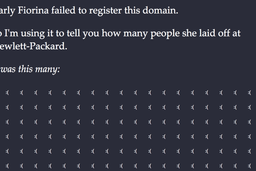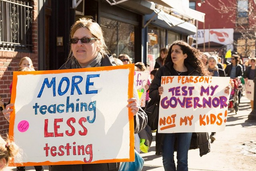Last month, father of six Erik Garner died after being put in a chokehold, use of force explicitly prohibited by the New York Police Department patrol guide, by an NYC police officer. Garner’s death, and its subsequent ruling as a homicide, has brought new attention to how the NYPD enforces its “Broken Windows” policy, which focuses on the aggressive enforcement of relatively minor infractions—public consumption of alcohol, disorderly conduct, or bicycling on the sidewalk, for example. Garner, an African-American man who was tackled by police for trying to break up a fight, was just the latest victim of these regulations. A new data analysis shows that Garner wasn’t alone, though; “Broken Windows” disproportionately targets the city’s African-American and Latino residents.
The New York Daily News reports:
The number of summonses issued each year has soared since “broken windows” was implemented in the early 1990s — from 160,000 in 1993 to a peak of 648,638 in 2005. Although that number has fallen in recent years—to 431,217 last year and down an additional 17% so far this year—writing out violations still remains the most frequent activity of the New York City Police Department, far surpassing felony and misdemeanor arrests combined.
Roughly 81 percent of the 7.3 million people hit with violations between 2001 and 2013 were black and Hispanic, according to a New York Civil Liberties Union calculation of available race data on summons forms. Current Police Commissioner Bill Bratton first implemented the policy when he was head of the transit police in 1990, and expanded it citywide during his first tenure as police commissioner from 1994 to 1996. Raymond Kelly was the commissioner from 2002 to 2013.
In some precincts, the rate of summonses was more than 1 in 10 residents last year, such as the 25th Precinct (East Harlem North), which is 90 percent black and Hispanic, where there were 18 summonses per 100 residents; the 40th Precinct (Mott Haven, Bronx), which is 98 percent black and Hispanic (16 per 100 residents); and the 41st Precinct (Hunts Point, Bronx), which is 98% black and Hispanic (16 per 100 residents).
Officials claim that a zero-tolerance policy regarding the more minor offenses outlined by "Broken Windows" will prevent major ones from occurring. While the theory has gained traction since it was first publicized in an Atlantic Monthly article in 1982, it does have its detractors. Dr. James Q. Wilson, one of the original authors of the 1982 article, said, in a 2006 interview with the New York Times, “I still to this day do not know if improving order will or will not reduce crime … People have not understood that this was speculation.”
Kevin is an educator and freelance writer in Chicago. Follow him on Twitter at @kevinsolari_.




